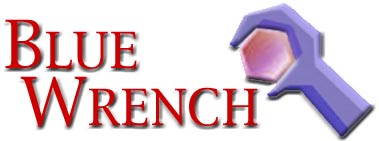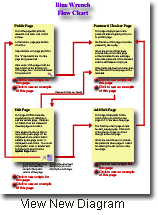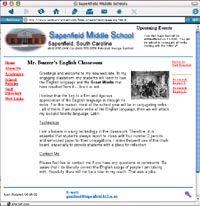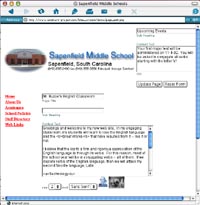
|
BLUE WRENCH is an open source experiment in K-12 Education.
 "Education, in the 21st century, will be about conversation!" "Education, in the 21st century, will be about conversation!"-- David Warlick 2001 |
BLUE WRENCH is an open source project to provide for schools a locally controlled and designed  web presence that teachers and other staff can maintain without having to use archaic HTML code or complicated web editing software. BLUE WRENCH consists of a number of coded modules that can be copied from this web site and inserted into locally created web pages to provide for easy and quick updates to web content. web presence that teachers and other staff can maintain without having to use archaic HTML code or complicated web editing software. BLUE WRENCH consists of a number of coded modules that can be copied from this web site and inserted into locally created web pages to provide for easy and quick updates to web content.
|
Main Menu
|
BLUE WRENCH school and classroom web pages consist of two different views. The first view, the public view, is the page that students, parents, and community members will see. The second view, edit view, looks the same as the public version, except that all content that is editable by the owner of the page is displayed as a web form. Using these forms, the owner of the page can add, edit, or delete text, and even add images.

|
Left
-- The public page is the version that web visitors will see and use. The content of this page has been entered and edited by the owner of the page. That content is embedded within a page layout that was designed by school or district staff, so that all pages have a similar look and navigation, and the image is representative of the school or district. In order to edit the content of the page, the owner simply clicks an icon in the lower right corner of the page (a blue wrench) and then enter the page password when prompted. |
||
|
Right
-- When the password is entered correctly, an edit version of the page appears. This page looks very much like the public version except that the content of the page appears in web forms. Using these forms the owner of the page can add, edit, and delete text. Content can be inserted into the web page through up to three separate content elements. Each element can include a heading, large block of text, and an image, which can be aligned to the right or left of the text content. In the example to the right (and left), there are two content elements: one in to upper right of the page, and one in the center of the page. The owner can also click an icon on the edit page to add an additional sub-page. Any number of sub-pages can be added, each linkable from the current parent page. In the example to the left, the red text to the right of the page is a sub-menu to sub-pages. |
 |
||